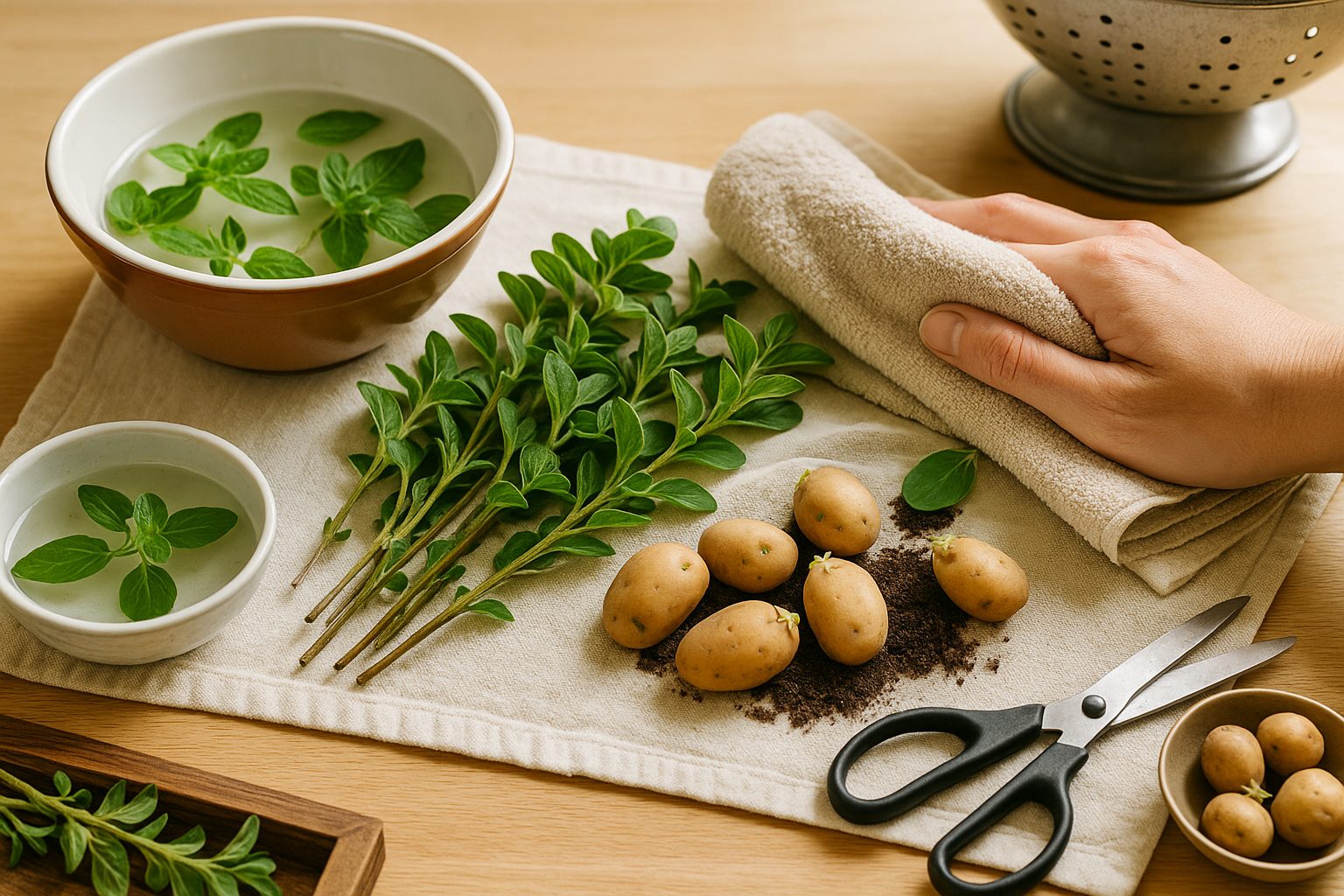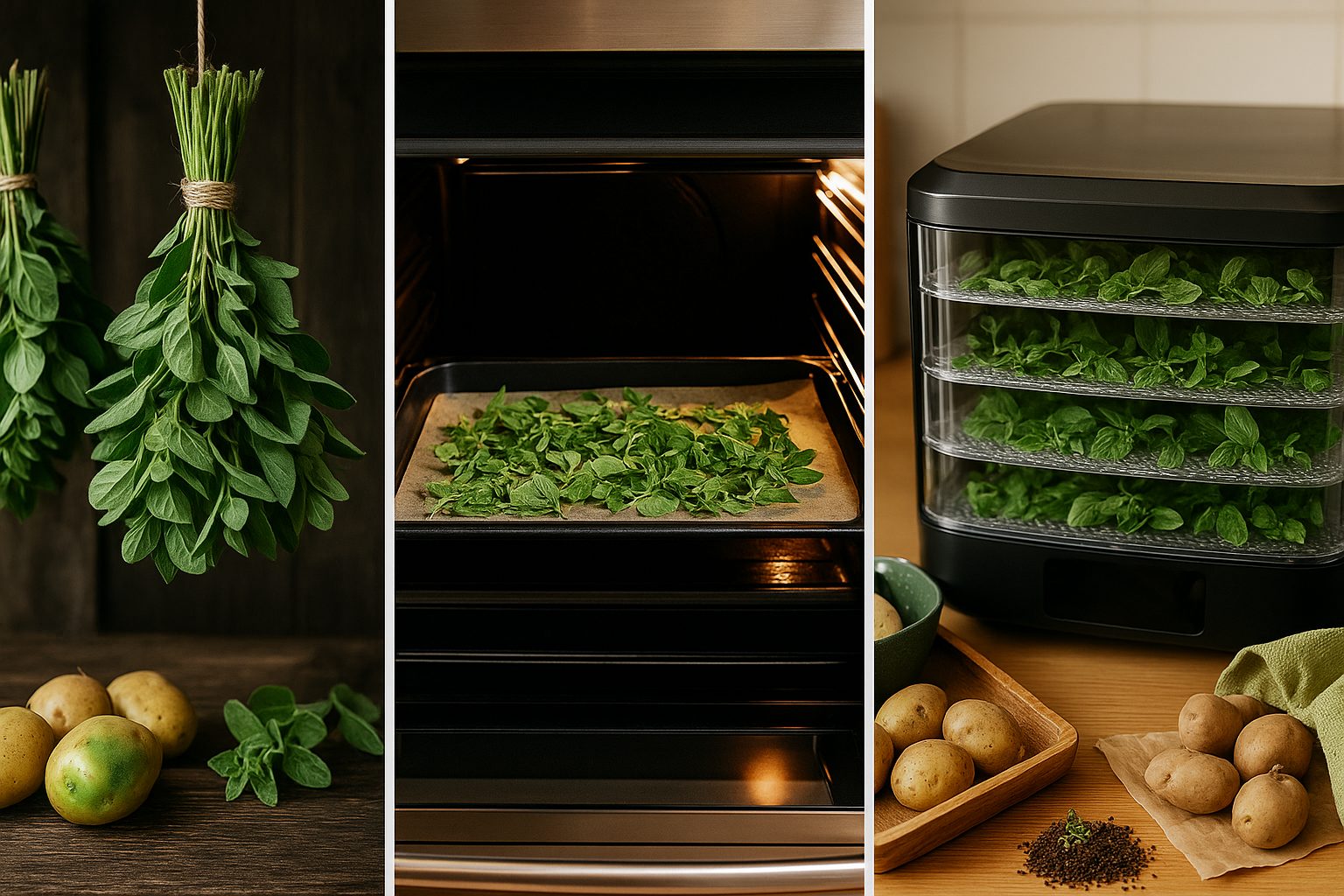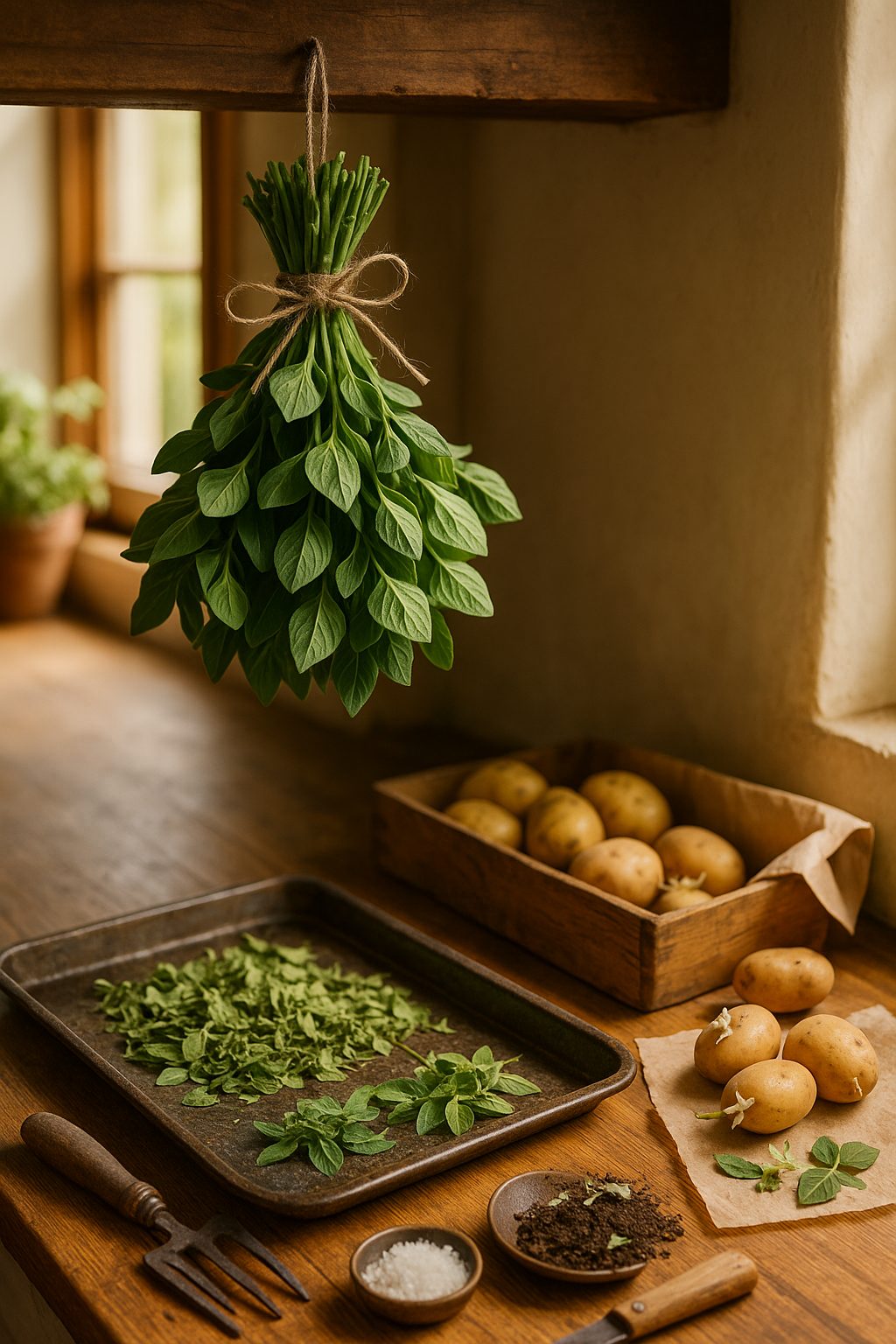Introduction
Drying Mexican oregano is an easy and rewarding way to preserve this flavorful herb for cooking or long-term storage. By drying oregano at home, you lock in its vibrant taste far better than store-bought jars, reduce kitchen waste by saving excess sprigs, and guarantee a steady supply no matter the season.
Whether you grow your own or pick up a bunch from the market, you’ll be glad to know there are several simple drying methods—no fancy equipment needed. From air-drying bunches on your kitchen wall to quick-drying in the oven, you can choose the method that fits your lifestyle.
In this post, you’ll find step-by-step guidance on drying Mexican oregano, smart tips for storage to keep your herbs fresh and potent, and practical ideas for using dried oregano in your favorite dishes. Let’s make sure you never run out of that authentic, earthy flavor again!
How to Prepare Oregano for Drying

For the best dried oregano, start by picking fresh, vibrant sprigs—look for leaves with a deep green color and a strong, peppery scent, avoiding any that look wilted or yellowed. Whether you’re harvesting from your garden or buying from the market, freshness is key, as older leaves lose flavor quickly.
Before drying, give the oregano a gentle wash in cool water to remove any dirt or bugs. Shake off excess water and lay the sprigs on a clean kitchen towel, then pat them dry as thoroughly as possible without bruising the leaves.
Take a few minutes to inspect each sprig, snipping away any discolored, damaged, or wilted bits; only healthy leaves should be dried. If the oregano is especially gritty, you can swish the sprigs in a bowl of water, but be sure to drain and air-dry them completely—moisture left behind can lead to mold during the drying process.
Arranging the sprigs in a single layer with room for air to circulate will also help them dry evenly and avoid mildew. With these careful prep steps, your dried oregano will retain maximum flavor and aroma for months to come.
Three Popular Methods for Drying Oregano

Air-drying is the simplest and most traditional way to preserve oregano, especially if you have a dry, well-ventilated space. To air-dry, tie small bundles of oregano stems with string or a rubber band, then hang them upside down in a dark, airy spot away from direct sunlight. Make sure there’s enough space between the bundles to allow good airflow—closets, attics, or an unused corner of the kitchen work well. Oregano typically dries in about 7 to 14 days, depending on humidity.
If you’re short on time, oven-drying speeds up the process. Spread washed and thoroughly dried oregano sprigs in a single layer on a baking sheet. Set your oven to its lowest setting, ideally around 180°F (80°C) or below, and prop the oven door open slightly to let moisture escape. Check every 15–20 minutes to prevent the leaves from scorching; drying usually takes 1–2 hours.
Alternatively, a food dehydrator offers a controlled, hands-off approach. Lay the oregano stems or leaves in a single layer on the dehydrator trays, set the temperature between 95–115°F (35–46°C), and dry for 1–4 hours, checking progress periodically. Dehydrators are energy-efficient, ensure even drying, and help minimize flavor loss.
Choose your method based on your kitchen setup:
- If you have lots of space and time, air-drying is easy and uses no energy.
- For quick results or small batches, oven-drying is practical.
- If you frequently dry herbs or want the best texture and flavor retention, investing in a dehydrator is worth considering.
Ultimately, the best method is the one that fits seamlessly into your routine and available resources.
How Long Does It Take to Dry Oregano?
Drying oregano at home can take anywhere from a few hours to a couple of weeks, depending on the method you choose. Air-drying is the most traditional approach—it typically takes 1-2 weeks, depending on your climate and humidity levels.
Simply tie small bundles of oregano stems and hang them upside down in a dry, well-ventilated space out of direct sunlight; check them every few days.
For those in a hurry, oven drying speeds up the process to about 1-2 hours. Spread oregano leaves in a single layer on a baking sheet, set your oven to the lowest temperature, and keep the door slightly propped open to let moisture escape.
Dehydrators work even faster, taking only 1-4 hours—just follow your device’s herb setting and check occasionally.
Regardless of the method, oregano is fully dried when the leaves feel crisp and crumble easily between your fingers. If the leaves bend rather than snap, they’re not ready.
To avoid under-drying, space leaves out evenly and don’t pile them too thick; to prevent over-drying (which can cause loss of flavor and color), watch closely during the final stages.
Store dried oregano in airtight containers away from direct light to keep it flavorful for months.
How to Store Dried Oregano for Maximum Freshness
To keep your dried oregano at its flavorful best, store it in airtight containers like glass jars or tightly sealed tins. These help protect the herb from air, moisture, and pests. Place the containers in a cool, dark spot—think pantry shelves away from the stove or direct sunlight—as heat and light can quickly sap the flavor.
Dried oregano typically stays fresh for up to 1-3 years, but it’s smart to check every few months by crushing a pinch between your fingers. If the aroma is faint or the flavor weak, it’s time to refresh your supply.
For easy organization, label each jar with the purchase or drying date so you can track freshness at a glance. To guard against moisture, consider placing a small food-safe silica packet in each jar.
Avoid storing oregano in the fridge, as repeated temperature changes can cause condensation that spoils the herb. Finally, always use a dry spoon when measuring out oregano to prevent introducing moisture, which can lead to clumping or mold.
Following these simple steps helps you make the most of your dried oregano, ensuring it delivers robust flavor whenever you need it.
How to Use Dried Oregano in Everyday Cooking
Dried oregano is a pantry staple that brings an earthy, slightly peppery flavor, perfect for elevating a variety of everyday dishes. Sprinkle it generously over homemade pizza or mix it into pasta sauces for that classic Italian touch—just a teaspoon or so can transform a simple tomato sauce or cheesy pizza into something special.
Dried oregano also works wonders in salad dressings and marinades; combine it with olive oil, lemon juice, garlic, and a pinch of salt for an easy, Mediterranean-inspired dressing that brings life to salads or grilled meats.
Don’t forget about soups, stews, and roasted vegetables—stir a small amount into vegetable soup or chili, or toss root vegetables with olive oil and oregano before roasting to enhance their natural sweetness.
A handy tip when substituting: dried oregano is more potent than fresh, so use about one-third the amount called for in a recipe. For example, if a dish calls for one tablespoon of fresh oregano, use just one teaspoon of the dried form. This simple swap helps you avoid overpowering your meal while still maximizing the herb’s signature flavor.
Bonus: Dried Oregano vs. Ground Oregano & Other FAQs
Whole dried oregano leaves and ground oregano come from the same plant, but they offer different experiences in the kitchen. Whole leaves retain more of their essential oils, delivering a milder, more aromatic flavor when sprinkled onto pizzas or stirred into sauces at the end of cooking. This makes them perfect for dishes where you want gentle bursts of oregano.
Ground oregano, on the other hand, is more potent and evenly distributes its intense, earthy flavor throughout soups, marinades, or dry rubs. When substituting one for the other, use about one-third the amount of ground oregano compared to dried leaves to avoid overpowering your dish.
If you’re wondering whether you can dry other herbs the same way as oregano, the answer is yes. Herbs like thyme, rosemary, sage, and basil can also be air-dried or dehydrated at home. Just be sure to store all dried herbs in airtight containers away from light and moisture to keep them fresh.
Regarding freezing, while dried oregano can technically be frozen, it isn’t usually necessary, as proper storage will preserve its flavor for up to a year. Freezing fresh leaves before drying, however, can help retain their vibrant color and aroma if your harvest is particularly bountiful.
Conclusion
Drying oregano at home is a simple, rewarding process that saves you money and delivers fresher flavors than store-bought spices. With just a little time and minimal equipment, you can preserve herbs for months, enhancing your meals whenever you choose.
Don’t stop at oregano—try these drying methods with rosemary, thyme, or mint to build your own custom herb collection. Every kitchen is different, so experimenting to find what works best for you is part of the fun.
If you have favorite tips or creative drying methods, we’d love to hear about them in the comments below!
